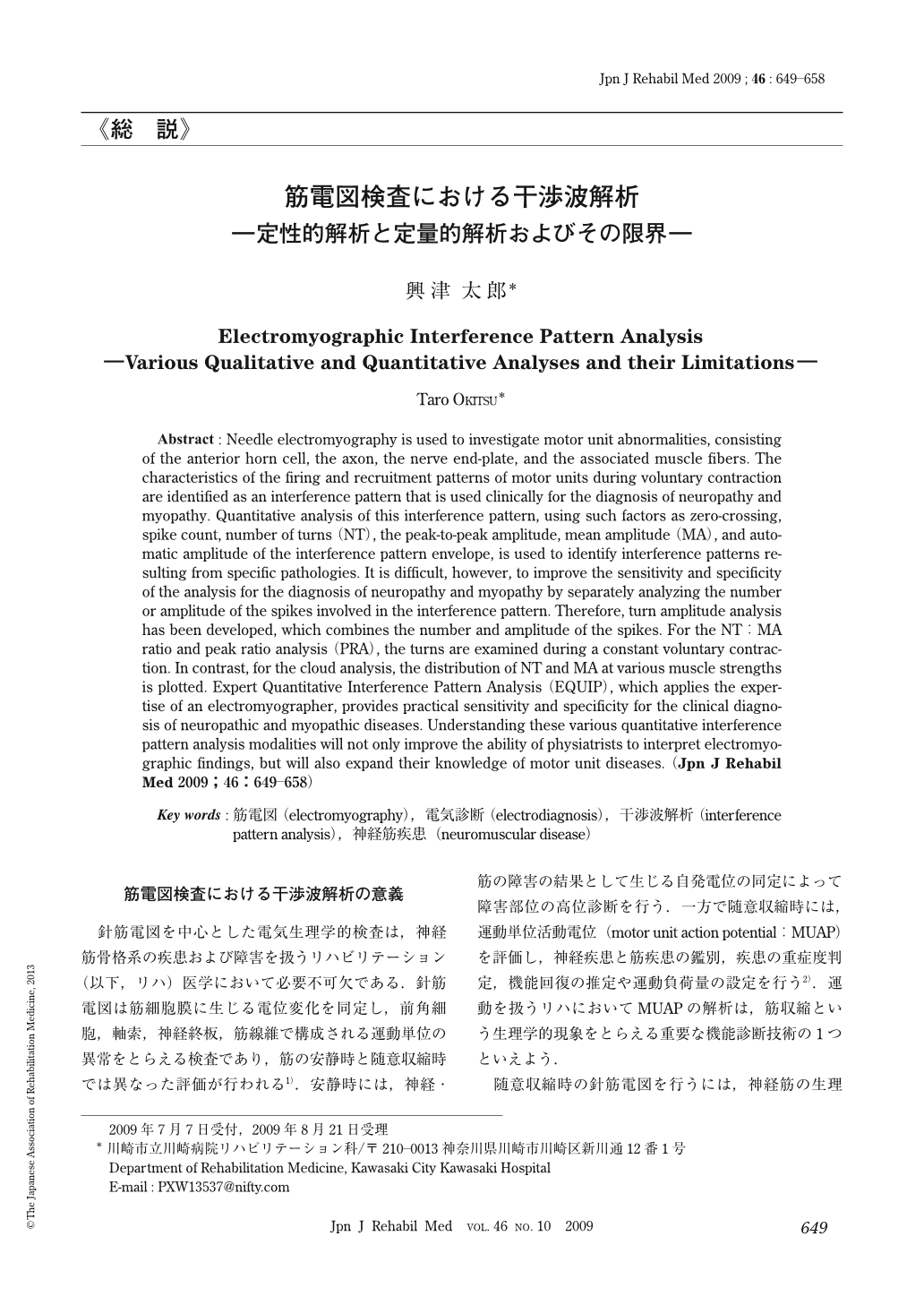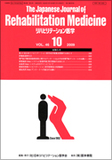Japanese
English
- 販売していません
- Abstract 文献概要
- 1ページ目 Look Inside
- 参考文献 Reference
筋電図検査における干渉波解析の意義
針筋電図を中心とした電気生理学的検査は,神経筋骨格系の疾患および障害を扱うリハビリテーション(以下,リハ)医学において必要不可欠である.針筋電図は筋細胞膜に生じる電位変化を同定し,前角細胞,軸索,神経終板,筋線維で構成される運動単位の異常をとらえる検査であり,筋の安静時と随意収縮時では異なった評価が行われる1).安静時には,神経・筋の障害の結果として生じる自発電位の同定によって障害部位の高位診断を行う.一方で随意収縮時には,運動単位活動電位(motor unit action potential:MUAP)を評価し,神経疾患と筋疾患の鑑別,疾患の重症度判定,機能回復の推定や運動負荷量の設定を行う2).運動を扱うリハにおいてMUAPの解析は,筋収縮という生理学的現象をとらえる重要な機能診断技術の1つといえよう.
随意収縮時の針筋電図を行うには,神経筋の生理学的知識と解剖学的知識の統合が必須である3,4).すなわち神経学的所見や臨床経過に応じて,対象とする筋肉から運動単位の発火および動員を適切に誘導し,その振幅と持続時間の特徴を評価する技術が求められる.これらの手技が不適切な場合には,誤った診断が導かれうる5,6).この問題を解決するための1つの手段が検査過程の形式化である.近年ではコンピュータを導入しMUAP解析を自動化するとともに,神経疾患と筋疾患を鑑別する検査プログラムが開発されている.しかしながら鑑別の精度が十分ではなく,解析が煩雑で時間を要するなど,改善すべき点は多い7).
Abstract : Needle electromyography is used to investigate motor unit abnormalities, consisting of the anterior horn cell, the axon, the nerve end-plate, and the associated muscle fibers. The characteristics of the firing and recruitment patterns of motor units during voluntary contraction are identified as an interference pattern that is used clinically for the diagnosis of neuropathy and myopathy. Quantitative analysis of this interference pattern, using such factors as zero-crossing, spike count, number of turns (NT), the peak-to-peak amplitude, mean amplitude (MA), and automatic amplitude of the interference pattern envelope, is used to identify interference patterns resulting from specific pathologies. It is difficult, however, to improve the sensitivity and specificity of the analysis for the diagnosis of neuropathy and myopathy by separately analyzing the number or amplitude of the spikes involved in the interference pattern. Therefore, turn amplitude analysis has been developed, which combines the number and amplitude of the spikes. For the NT:MA ratio and peak ratio analysis (PRA), the turns are examined during a constant voluntary contraction. In contrast, for the cloud analysis, the distribution of NT and MA at various muscle strengths is plotted. Expert Quantitative Interference Pattern Analysis (EQUIP), which applies the expertise of an electromyographer, provides practical sensitivity and specificity for the clinical diagnosis of neuropathic and myopathic diseases. Understanding these various quantitative interference pattern analysis modalities will not only improve the ability of physiatrists to interpret electromyographic findings, but will also expand their knowledge of motor unit diseases.

Copyright © 2009, The Japanese Association of Rehabilitation Medicine. All rights reserved.


